Opinion & Analysis
Smartphones and competitive golf
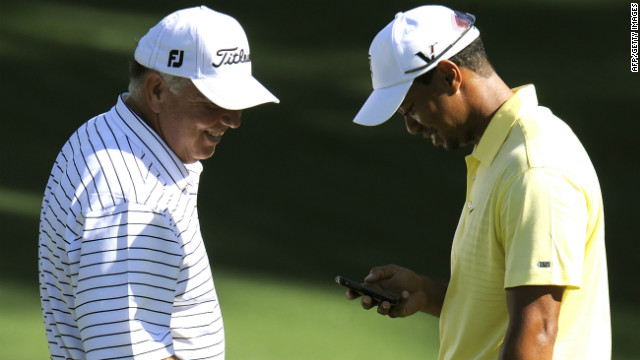
By Chris Hibler
GolfWRX Contributor
In a tournament this past weekend I inadvertently opened a can of worms. I asked the tournament director if I was allowed to use my iPhone as a distance measuring device. The answer I received was an unequivocal “yes,” but he added, “just as long as you only use it for distance.”
My cart partner overheard out discussion and promptly lost his marbles! He began spouting about it being against the rules:
“The tournament director does not have the power to overrule the USGA,” he said.
I decided to play it conservatively, sticking to my trusty rangefinder instead of my iPhone. As soon as the round ended, I jumped onto my iPad to see what I could find out about this murky and misunderstood rule. You know what I found out? It is a murky rule and I have misunderstood it all year long.
Here are the facts: Prior to 2006, all distance-measuring devices (aka DMD’s) were illegal during competitive rounds. In 2006, the USGA and R&A made a ruling saying that golfers could use a DMD under Local Rules during competitive rounds as long as the devices were either dedicated devices (i.e., laser ranger finders or GPS units) or golfers could use smartphones as long as they only used the devices for the DMD and not for weather or any other “illegal” data. Thus, we as golfers, were on the “honor system” — as it should be.
But, this year, the USGA and R&A came out and essentially reversed their argument saying that smartphones could be used as DMD as long as they didn’t have the capability anywhere on the device of measuring wind velocity or accessing weather data. This rendered all smartphones illegal as, in the case of iPhones, the phones contain an embedded weather app that cannot be deleted. Also, all smartphones are web-accessible, meaning you could access any website that has weather info from virtually any smartphone on the market.
This is not new news to most of you as the smartphone ban has been widely discussed since the GPS apps that many golfers have bought have been rendered useless for tournament play by the USGA this year. That could give you an unfair advantage by possibly glancing at your built-in weather app to tell you the speed and direction of the prevailing wind (which could vary widely from where the golfer is on the course, but I digress).
Back at my tournament, since I decided that I would not stir up controversy by using my iPhone, I was faced with a day with no access to my device at all — radio silence. It was just me, my clubs, my laser rangefinder and the hope that a TV was on at the turn to check NFL scores. Yes, many of you are applauding this as you would rather have me focus my attention on my round as opposed to sneaking glances at my “DirecTV Sunday Ticket” app – it keeps the round moving you say. I get that. But for me, the issue isn’t about checking football scores, using the latest golf GPS app, calling home, or even checking the wind speed; the issue here is about trust and integrity — and maybe even greed.
By banning the use of smartphones and related devices, the USGA is essentially saying that if a typical golfer uses these devices they are going to cheat. I’ve got news for you USGA, if I am going to cheat, I am going to REALLY cheat. What are the ways to REALLY cheat? Here they are in no particular order:
- “Find” my lost ball in the deep woods by dropping a matching ball down my pant leg.
- Improve my lie in the greenside rough to make it easier to chip the ball
- Count my whiff in the long grass as “a practice swing.”
- Mark my ball closer to the hole to shorten my putt.
Do I do these things? No. Have I seen (or suspected others) from doing these? You bet. I know one thing, nowhere on that list do you see where I think that a device will give me a wind speed reading that will actually help me to lower my score. I also didn’t make any note on that list about how a compass reading would assist me in any way.
I will go so far as to say that at even the highest level of golf, there would be little advantage gained with the knowledge that a smartphone could tell them about wind direction or wind speed that they couldn’t better themselves by dropping grass clippings in midair moments before their shot.
My point is this: golf is a game of integrity. The job for us as golfers is to play the course fair and square. We call penalties on ourselves when the ball moves inadvertently. We mark the ball where it came to rest on the green. We don’t try to cheat our competitors or ourselves. If you do, you don’t belong in this game.
I personally believe two things about golf integrity, which I call “Golf Karma”
- The guilt of “getting away” with a cheat weighs heavily on the golfer’s mind resulting in errant shots as the round progresses.
- We get rewarded later in the round for calling a penalty on ourselves (that no one else knew about let alone suspected) based on real self-confidence borne from integrity.
I would like it if the USGA would actually trust us. But, I have a sinking suspicion that the answer lies somewhere in the dirty underbelly of golf merchandising: the groups that benefit most from this inane ruling are the companies that specialize in the “legal” yardage devices. By quashing the low-priced app competition, the USGA has essentially ruled in favor of the handful of companies that create dedicated GPS units and laser rangefinders.
The other point is that common sense tells us that essentially banning smartphones in 2012 and beyond is just not practical in this day and age. Yes, I can recall the old and simpler days where I would leave my phone in the car, take my four hours out on the links and just tune out of life. But, we are simply not wired this way anymore. Our devices have become an extension of ourselves. For golf, it’s simply not practical to ban my possession of a smartphone on the course. I track my stats for later analysis. I keep my scorecards on my phone to see how my game is progressing. Yes, there’s is some wishy-washy part of the rule that states that you can have your phone in your pocket or something along those lines if it’s not in use.
But, I don’t like your chances with a hardline tournament director trying to argue, “I wasn’t using it, it was just in my pocket, kind of off with no weather app and stuff.”
At the end of the day, I would just like the USGA to trust and allow me as a golfer to do a few simple things in 2013:
- Not cheat with my smartphone while using it during a competitive round.
- Not slow play by device distraction.
- Actually speed up play by knowing my yardage quickly without wandering around looking for sprinklers or yardage markers.
- Save money in a tough economy by using affordable GPS apps on smartphones
- Use mobile devices versus feeling obligated to purchase expensive “legal” yardage devices.
One final thought and a note to the USGA: what exactly am I supposed to do with my handy and convenient “Rules of Golf” app that you offer through the App store anyway? I just want to be sure I know what to say when my competitor “finds” his ball in the woods a minute before I find it.
Click here for more discussion in the “Tour Talk” forum.
- LIKE8
- LEGIT0
- WOW0
- LOL0
- IDHT0
- FLOP0
- OB1
- SHANK0
19th Hole
Vincenzi’s 2024 Zurich Classic of New Orleans betting preview

The PGA TOUR heads to New Orleans to play the 2023 Zurich Classic of New Orleans. In a welcome change from the usual stroke play, the Zurich Classic is a team event. On Thursday and Saturday, the teams play best ball, and on Friday and Sunday the teams play alternate shot.
TPC Louisiana is a par 72 that measures 7,425 yards. The course features some short par 4s and plenty of water and bunkers, which makes for a lot of exciting risk/reward scenarios for competitors. Pete Dye designed the course in 2004 specifically for the Zurich Classic, although the event didn’t make its debut until 2007 because of Hurricane Katrina.
Coming off of the Masters and a signature event in consecutive weeks, the field this week is a step down, and understandably so. Many of the world’s top players will be using this time to rest after a busy stretch.
However, there are some interesting teams this season with some stars making surprise appearances in the team event. Some notable teams include Patrick Cantlay and Xander Schauffele, Rory McIlroy and Shane Lowry, Collin Morikawa and Kurt Kitayama, Will Zalatoris and Sahith Theegala as well as a few Canadian teams, Nick Taylor and Adam Hadwin and Taylor Pendrith and Corey Conners.
Past Winners at TPC Louisiana
- 2023: Riley/Hardy (-30)
- 2022: Cantlay/Schauffele (-29)
- 2021: Leishman/Smith (-20)
- 2019: Palmer/Rahm (-26)
- 2018: Horschel/Piercy (-22)
- 2017: Blixt/Smith (-27)
2024 Zurich Classic of New Orleans Picks
Tom Hoge/Maverick McNealy +2500 (DraftKings)
Tom Hoge is coming off of a solid T18 finish at the RBC Heritage and finished T13 at last year’s Zurich Classic alongside Harris English.
This season, Hoge is having one of his best years on Tour in terms of Strokes Gained: Approach. In his last 24 rounds, the only player to top him on the category is Scottie Scheffler. Hoge has been solid on Pete Dye designs, ranking 28th in the field over his past 36 rounds.
McNealy is also having a solid season. He’s finished T6 at the Waste Management Phoenix Open and T9 at the PLAYERS Championship. He recently started working with world renowned swing coach, Butch Harmon, and its seemingly paid dividends in 2024.
Keith Mitchell/Joel Dahmen +4000 (DraftKings)
Keith Mitchell is having a fantastic season, finishing in the top-20 of five of his past seven starts on Tour. Most recently, Mitchell finished T14 at the Valero Texas Open and gained a whopping 6.0 strokes off the tee. He finished 6th at last year’s Zurich Classic.
Joel Dahmen is having a resurgent year and has been dialed in with his irons. He also has a T11 finish at the PLAYERS Championship at TPC Sawgrass which is another Pete Dye track. With Mitchell’s length and Dahmen’s ability to put it close with his short irons, the Mitchell/Dahmen combination will be dangerous this week.
Taylor Moore/Matt NeSmith +6500 (DraftKings)
Taylor Moore has quickly developed into one of the more consistent players on Tour. He’s finished in the top-20 in three of his past four starts, including a very impressive showing at The Masters, finishing T20. He’s also finished T4 at this event in consecutive seasons alongside Matt NeSmith.
NeSmith isn’t having a great 2024, but has seemed to elevate his game in this format. He finished T26 at Pete Dye’s TPC Sawgrass, which gives the 30-year-old something to build off of. NeSmith is also a great putter on Bermudagrass, which could help elevate Moore’s ball striking prowess.
- LIKE8
- LEGIT3
- WOW1
- LOL1
- IDHT0
- FLOP3
- OB1
- SHANK1
19th Hole
Vincenzi’s 2024 LIV Adelaide betting preview: Cam Smith ready for big week down under

After having four of the top twelve players on the leaderboard at The Masters, LIV Golf is set for their fifth event of the season: LIV Adelaide.
For both LIV fans and golf fans in Australia, LIV Adelaide is one of the most anticipated events of the year. With 35,000 people expected to attend each day of the tournament, the Grange Golf Club will be crawling with fans who are passionate about the sport of golf. The 12th hole, better known as “the watering hole”, is sure to have the rowdiest of the fans cheering after a long day of drinking some Leishman Lager.
The Grange Golf Club is a par-72 that measures 6,946 yards. The course features minimal resistance, as golfers went extremely low last season. In 2023, Talor Gooch shot consecutive rounds of 62 on Thursday and Friday, giving himself a gigantic cushion heading into championship Sunday. Things got tight for a while, but in the end, the Oklahoma State product was able to hold off The Crushers’ Anirban Lahiri for a three-shot victory.
The Four Aces won the team competition with the Range Goats finishing second.
*All Images Courtesy of LIV Golf*
Past Winners at LIV Adelaide
- 2023: Talor Gooch (-19)
Stat Leaders Through LIV Miami
Green in Regulation
- Richard Bland
- Jon Rahm
- Paul Casey
Fairways Hit
- Abraham Ancer
- Graeme McDowell
- Henrik Stenson
Driving Distance
- Bryson DeChambeau
- Joaquin Niemann
- Dean Burmester
Putting
- Cameron Smith
- Louis Oosthuizen
- Matt Jones
2024 LIV Adelaide Picks
Cameron Smith +1400 (DraftKings)
When I pulled up the odds for LIV Adelaide, I was more than a little surprised to see multiple golfers listed ahead of Cameron Smith on the betting board. A few starts ago, Cam finished runner-up at LIV Hong Kong, which is a golf course that absolutely suits his eye. Augusta National in another course that Smith could roll out of bed and finish in the top-ten at, and he did so two weeks ago at The Masters, finishing T6.
At Augusta, he gained strokes on the field on approach, off the tee (slightly), and of course, around the green and putting. Smith able to get in the mix at a major championship despite coming into the week feeling under the weather tells me that his game is once again rounding into form.
The Grange Golf Club is another course that undoubtedly suits the Australian. Smith is obviously incredibly comfortable playing in front of the Aussie faithful and has won three Australian PGA Championship’s. The course is very short and will allow Smith to play conservative off the tee, mitigating his most glaring weakness. With birdies available all over the golf course, there’s a chance the event turns into a putting contest, and there’s no one on the planet I’d rather have in one of those than Cam Smith.

Louis Oosthuizen +2200 (DraftKings)
Louis Oosthuizen has simply been one of the best players on LIV in the 2024 seas0n. The South African has finished in the top-10 on the LIV leaderboard in three of his five starts, with his best coming in Jeddah, where he finished T2. Perhaps more impressively, Oosthuizen finished T7 at LIV Miami, which took place at Doral’s “Blue Monster”, an absolutely massive golf course. Given that Louis is on the shorter side in terms of distance off the tee, his ability to play well in Miami shows how dialed he is with the irons this season.
In addition to the LIV finishes, Oosthuizen won back-to-back starts on the DP World Tour in December at the Alfred Dunhill Championship and the Mauritus Open. He also finished runner-up at the end of February in the International Series Oman. The 41-year-old has been one of the most consistent performers of 2024, regardless of tour.
For the season, Louis ranks 4th on LIV in birdies made, T9 in fairways hit and first in putting. He ranks 32nd in driving distance, but that won’t be an issue at this short course. Last season, he finished T11 at the event, but was in decent position going into the final round but fell back after shooting 70 while the rest of the field went low. This season, Oosthuizen comes into the event in peak form, and the course should be a perfect fit for his smooth swing and hot putter this week.

- LIKE12
- LEGIT3
- WOW1
- LOL1
- IDHT0
- FLOP1
- OB1
- SHANK1
Opinion & Analysis
The Wedge Guy: What really makes a wedge work? Part 1

Of all the clubs in our bags, wedges are almost always the simplest in construction and, therefore, the easiest to analyze what might make one work differently from another if you know what to look for.
Wedges are a lot less mysterious than drivers, of course, as the major brands are working with a lot of “pixie dust” inside these modern marvels. That’s carrying over more to irons now, with so many new models featuring internal multi-material technologies, and almost all of them having a “badge” or insert in the back to allow more complex graphics while hiding the actual distribution of mass.
But when it comes to wedges, most on the market today are still single pieces of molded steel, either cast or forged into that shape. So, if you look closely at where the mass is distributed, it’s pretty clear how that wedge is going to perform.
To start, because of their wider soles, the majority of the mass of almost any wedge is along the bottom third of the clubhead. So, the best wedge shots are always those hit between the 2nd and 5th grooves so that more mass is directly behind that impact. Elite tour professionals practice incessantly to learn to do that consistently, wearing out a spot about the size of a penny right there. If impact moves higher than that, the face is dramatically thinner, so smash factor is compromised significantly, which reduces the overall distance the ball will fly.
Every one of us, tour players included, knows that maddening shot that we feel a bit high on the face and it doesn’t go anywhere, it’s not your fault.
If your wedges show a wear pattern the size of a silver dollar, and centered above the 3rd or 4th groove, you are not getting anywhere near the same performance from shot to shot. Robot testing proves impact even two to three grooves higher in the face can cause distance loss of up to 35 to 55 feet with modern ‘tour design’ wedges.
In addition, as impact moves above the center of mass, the golf club principle of gear effect causes the ball to fly higher with less spin. Think of modern drivers for a minute. The “holy grail” of driving is high launch and low spin, and the driver engineers are pulling out all stops to get the mass as low in the clubhead as possible to optimize this combination.
Where is all the mass in your wedges? Low. So, disregarding the higher lofts, wedges “want” to launch the ball high with low spin – exactly the opposite of what good wedge play requires penetrating ball flight with high spin.
While almost all major brand wedges have begun putting a tiny bit more thickness in the top portion of the clubhead, conventional and modern ‘tour design’ wedges perform pretty much like they always have. Elite players learn to hit those crisp, spinny penetrating wedge shots by spending lots of practice time learning to consistently make contact low in the face.
So, what about grooves and face texture?
Grooves on any club can only do so much, and no one has any material advantage here. The USGA tightly defines what we manufacturers can do with grooves and face texture, and modern manufacturing techniques allow all of us to push those limits ever closer. And we all do. End of story.
Then there’s the topic of bounce and grinds, the most complex and confusing part of the wedge formula. Many top brands offer a complex array of sole configurations, all of them admittedly specialized to a particular kind of lie or turf conditions, and/or a particular divot pattern.
But if you don’t play the same turf all the time, and make the same size divot on every swing, how would you ever figure this out?
The only way is to take any wedge you are considering and play it a few rounds, hitting all the shots you face and observing the results. There’s simply no other way.
So, hopefully this will inspire a lively conversation in our comments section, and I’ll chime in to answer any questions you might have.
And next week, I’ll dive into the rest of the wedge formula. Yes, shafts, grips and specifications are essential, too.
- LIKE32
- LEGIT7
- WOW1
- LOL1
- IDHT2
- FLOP3
- OB1
- SHANK3
-

 19th Hole2 weeks ago
19th Hole2 weeks agoDave Portnoy places monstrous outright bet for the 2024 Masters
-

 19th Hole3 days ago
19th Hole3 days agoJustin Thomas on the equipment choice of Scottie Scheffler that he thinks is ‘weird’
-

 19th Hole2 weeks ago
19th Hole2 weeks agoTiger Woods arrives at 2024 Masters equipped with a putter that may surprise you
-

 19th Hole3 days ago
19th Hole3 days ago‘Absolutely crazy’ – Major champ lays into Patrick Cantlay over his decision on final hole of RBC Heritage
-

 19th Hole3 weeks ago
19th Hole3 weeks agoReport: Tiger Woods has ‘eliminated sex’ in preparation for the 2024 Masters
-

 19th Hole1 week ago
19th Hole1 week agoTwo star names reportedly blanked Jon Rahm all week at the Masters
-

 19th Hole1 week ago
19th Hole1 week agoReport: LIV Golf identifies latest star name they hope to sign to breakaway tour
-

 19th Hole1 week ago
19th Hole1 week agoNeal Shipley presser ends in awkward fashion after reporter claims Tiger handed him note on 8th fairway

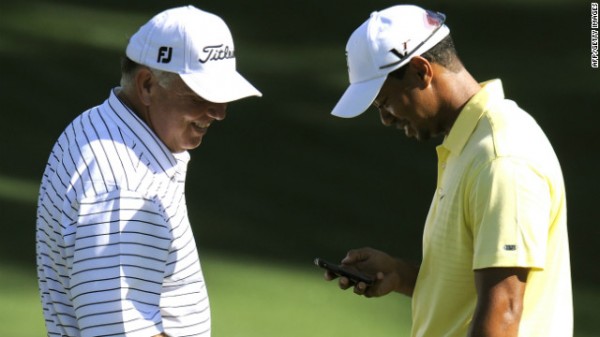
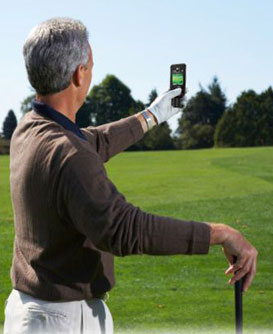


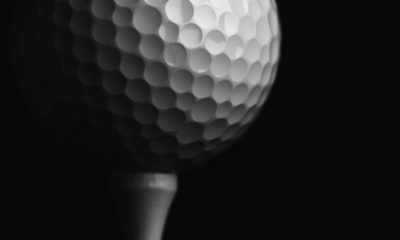

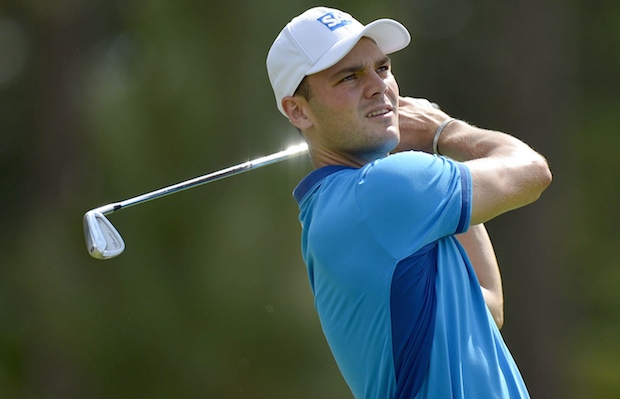
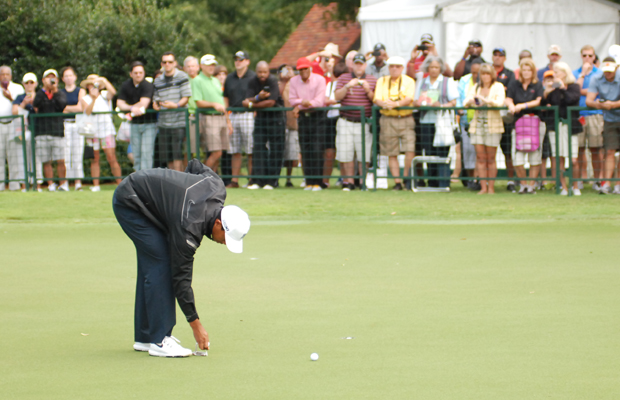
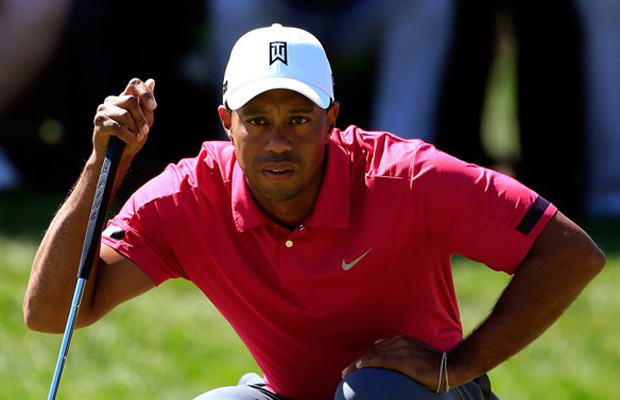

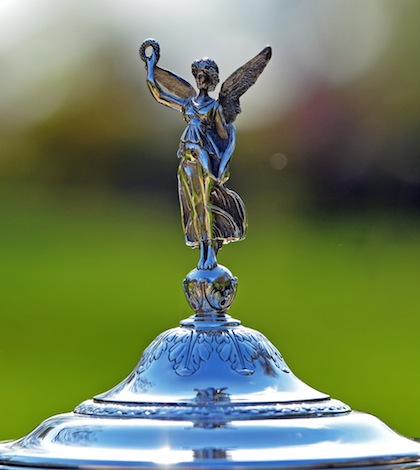












troy
Nov 12, 2012 at 12:21 pm
Great article Chris about the intersection of golf and technology. I agree with you — ultimately, the rules of golf are about integrity and self-regulation. You are expected to penalize yourself for infractions and as such each golfer should be trusted not to break the rules with their smart phones.
I believe in golf karma as well! You will pay for “cheating” and be rewarded for playing by the rules!
dapadre
Nov 12, 2012 at 8:02 am
Apologis for my misspellings.
dapadre
Nov 12, 2012 at 8:01 am
Nice article. Sometimes I think that we humans love to complicate VERY SIMPLE things. Um, why dont they simply create or approve/sanction a DMD application. Nowadays, this can be ctreated (application) at fractions of the cost. Thsi application would pnly relay distance. Problem solved or am I missing somthing.
tlmck
Nov 11, 2012 at 7:40 am
The USGA and R&A are so passe’. It is time for them to go away before they drive all others away.
Dane
Nov 11, 2012 at 5:25 am
Golfshot app is what I use too. It’s great, simple, useful and keeps all your stats.
ConradMacDonald
Nov 10, 2012 at 10:09 pm
Smartphones should be legal for all competition with the exception of professional tours where it is there job to play golf. For 99.9% of golfers they don’t make there money there and there work could call. In this day and age some people cannot take 4 hours off the phone. I play with many business owners that take calls all round because they have to, business comes before pleasure…
Mats B
Nov 10, 2012 at 4:18 am
Great article! We need to get this debate on top of the board. You mension a whole deal of great points and from different perspective.
I suggest we all put this article on our Facebook walls, Twitter accounts, and make a copy paste mail to our local golf club, our local golf union and national PGA society. USGA and R&A has simply made a mistake changing this rule or adding a change to the rule in 2012. It needs to be corrected sooner than later otherwise it will harm the development of the game and the growth of new players enthusiast joining the game. Which teenager shuts off his mobile phone and put it away for 4-5 hours? No one I know and they are the future for this game…. Todays society demand that you’re accessable almost 24/7, I’m not stating that it’s good, but it is reality. If we are not allowed using our phones on course, we simply don’t go out to the course. And while having your smartphone out there, why not try to use it for the best? Where players can choose themselves how much they want to engage in the game, point down scores and use statistics in order to improve their game and so on….. Why having isolated devices for each task or function, when the technique allows us to gather all we need and require in one device. It’s a time saver, using one device instead of having to go through a number of devices during a round of golf.
Wake up USGA and R&A, it’s time to realize that future won’t allow for silly roule changes simular to the changes you made last year, it will hurt the game of golf and the sport of golf, in a wider perspective than a few Manufacturers of DMD:s.
As a reply to your last question Nate, I use Golfshot to my iphone and it works great for me. Once you’ve got used to it, it’s simple, a time saver and gives you an increased awareness of you game and capabilities, if you use the functions for statistic.
Again, great article and great subject.
/Mats
Nate Leeds
Nov 9, 2012 at 9:31 pm
Great article with many interesting points I’ve never considered. I completely agree, the use of a smartphone should be allowed with the honest onus on us.
What is the best app to track stats? What kind of stats can I track?
Thanks in advance.
Nate
Princeton_TN
Nov 9, 2012 at 12:27 pm
I had the exact opposite hit me last week. While playing in a tournament my job called me on three different holes. I had to answer, it was my job! Of course it was a smart phone, and at the time I was leading the tournament or so I was told. After the conclusion of the three hole stretch that I had to talk on the phone, one of the rules officials came up to me on the tee box and informed me that a two stroke penalty was given to me for each hole in which I used my smart phone for phone calls in which I was inside the players ropes! WOW a stretch of holes I just went birdie, birdie and par were now bogey, bogey and double bogey! I asked for an explanation because I was using it for only the call, and was told by my caddie to shut up cause he thought that I should have been disqualified! None the less after words I was destroyed and ended up loosing the event by 8 strokes, I shot an 82 and 74 won the event! It was on holes 10, 11 and 12 and I was 3 over at the turn and had just gotten it to one over before the penalties were assessed… I mean really!!! I think that with the yardage books used today, range finders leagal for USGA and R&A play, why not allow the use of cell phones and any measuring devices that they can hold! It isnt as if only one or two would gain an advantage, because we all have access to them today!!!